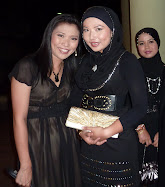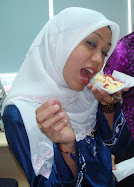Once a semester, the lecturers in my engineering group (civil) organise a day of activities for our students. This month we went out to the beautiful grounds at De Rhu Resort, just 15 minutes north of Kuantan. De Rhu easily has the

largest and most beautifully landscaped pool of the beach resorts in the Kuantan area. It is designed like a large snake, with water ranging in depth from 1.5m to 0.5m in sections for children. I used to go swimming 2-3 times each week and loved to loll about in the water listening to the morning bird choir.
(Left: Female students WITH tudong)
A typical student day really only lasts for half a day, but consists of (1) activities; (2) food; and (3) funny photos. Young adults (girls) like the two-finger V sign, especially beside the eyes. Also, for some unknown reason, the tudong-wearing girls posed separately from the non-tudong-wearing girls. Mysterious, women are they.

(Right: Female students WITHOUT tudong)
Activities this time consisted of forming into eight groups of 9-10 students each. Groups competed against each other in a gunny sack race, pulling on a sled race, three-legged race, and etc. One race that I had never seen before consisted of them throwing a large die (singular form of dice

) and taking 1, 3, or 5 small steps backwards if an odd number were thrown; and 2, 4, or 6 large steps forward if an even number were thrown. Despite having shorter legs, a group of girls won this one (their two male team-mates lazily refused to participate) because they threw the number 6 three times in a row.
(Left: Ski board race)
The winners of each activity won a hamper, a typical door-prize or award here in Malaysia. A

hamper consists of a stack of goodies (packages of cookies, snack items, drinks) wrapped in plastic. With the potential of nearly one hamper per team member (8 hampers, 9-10 members), the motivation was strong to win in each event. At the end, one group won three hampers, and the other five were split amongst three other groups. Of course, to even things out, my female colleagues had prepared hampers for The Most Cooper

ative Group, The Most Creative Group, and The Most Attractive Group. These went to groups that won NOTHING in the competition. Yes, political-correctness has made it to these shores also.
Other than having a fun time interacting with my students OUTSIDE the classroom (important for building rapport for WITHIN the classroom), I also came away with a very bright-red sunburn on my neck and lower arms. Ouch! Forgot the sun lotion again.






